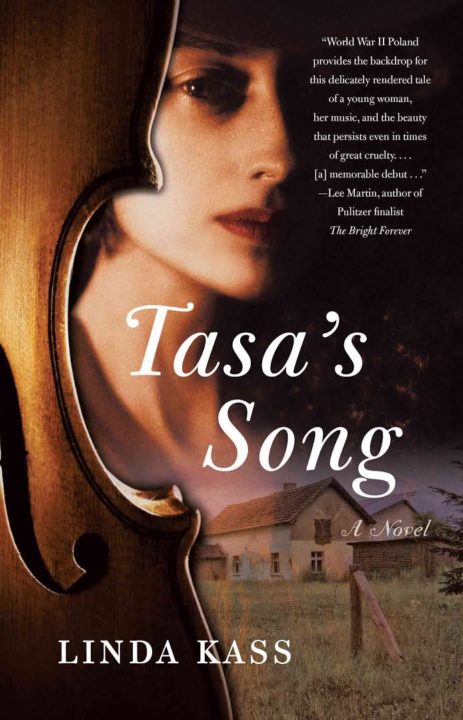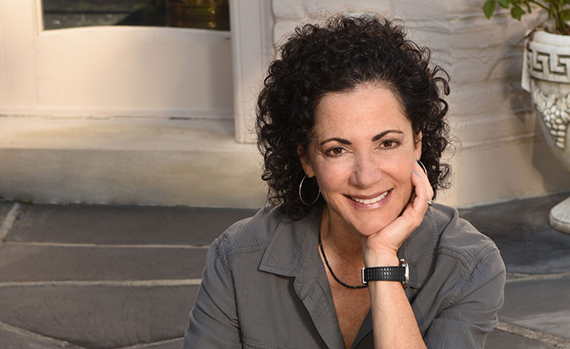
TASA’S SONG
1943. Tasa Rosinski and five relatives, all Jewish, escape their rural village in eastern Poland avoiding certain death and find refuge in a bunker beneath a barn built by their longtime employee.
A decade earlier, ten-year-old Tasa dreams of someday playing her violin like Paganini. To continue her schooling, she leaves her family for a nearby town, joining older cousin Danik at a private Catholic academy where her musical talent flourishes despite escalating political tension. But when the war breaks out and the eastern swath of Poland falls under Soviet control, Tasa’s relatives become Communist targets, her new tender relationship is imperiled,
1943. Tasa Rosinski and five relatives, all Jewish, escape their rural village in eastern Poland avoiding certain death and find refuge in a bunker beneath a barn built by their longtime employee.
A decade earlier, ten-year-old Tasa dreams of someday playing her violin like Paganini. To continue her schooling, she leaves her family for a nearby town, joining older cousin Danik at a private Catholic academy where her musical talent flourishes despite escalating political tension. But when the war breaks out and the eastern swath of Poland falls under Soviet control, Tasa’s relatives become Communist targets, her new tender relationship is imperiled, and the family’s secure world unravels.
From a peaceful village in eastern Poland to a partitioned post-war Vienna, from a promising childhood to a year living underground, Tasa’s Song celebrates the bonds of love, the power of memory, the solace of music, and the enduring strength of the human spirit. An extraordinary novel inspired by true events.
- She Writes Press
- Paperback
- May 2016
- 256 Pages
- 9781631520648
About Linda Kass
 Linda Kass was born in Columbus, Ohio to Eastern European immigrant parents. Her debut novel, TASA’S SONG, was inspired by her mother’s early life in eastern Poland during the Second World War. Linda has an MA in Journalism and spent her early career as a magazine reporter and correspondent for regional and national publications, such as TIME and The Detroit Free Press. For the past twenty-five years, she has served many community organizations as a strong advocate of education, literacy, and the arts. Her past experience as a trustee and board chair of the Columbus Symphony Orchestra fed into much of the music that fills the pages of Tasa’s Song, whose protagonist is a violin prodigy. Her novel inspired acclaimed violinist Charles Wetherbee, of the Carpe Diem String Quartet, to compose an original composition for violin, “Tasa’s Song,” that had its world premiere in May of 2016 in Columbus, Ohio and led to a collaborative “Book in Concert” program of readings by the author followed by music played by Carpe Diem, now booked in national venues through March of 2017. Linda is also a long distance road cyclist and annually rides in an annual event to support cancer research.
Linda Kass was born in Columbus, Ohio to Eastern European immigrant parents. Her debut novel, TASA’S SONG, was inspired by her mother’s early life in eastern Poland during the Second World War. Linda has an MA in Journalism and spent her early career as a magazine reporter and correspondent for regional and national publications, such as TIME and The Detroit Free Press. For the past twenty-five years, she has served many community organizations as a strong advocate of education, literacy, and the arts. Her past experience as a trustee and board chair of the Columbus Symphony Orchestra fed into much of the music that fills the pages of Tasa’s Song, whose protagonist is a violin prodigy. Her novel inspired acclaimed violinist Charles Wetherbee, of the Carpe Diem String Quartet, to compose an original composition for violin, “Tasa’s Song,” that had its world premiere in May of 2016 in Columbus, Ohio and led to a collaborative “Book in Concert” program of readings by the author followed by music played by Carpe Diem, now booked in national venues through March of 2017. Linda is also a long distance road cyclist and annually rides in an annual event to support cancer research.
Praise
“Across decades and continents, Tasa follows a song of hope that is uplifting even in the face of great adversity, proving that an indomitable spirit can transcend the greatest hardships. Kass depicts a heartbreaking time with great sensitivity and detail in this beautifully rendered historical drama.” —Booklist
“ . . . World War II Poland provides the backdrop for this delicately rendered tale of a young woman, her music, and the beauty that persists even in times of great cruelty. Linda Kass writes with a sure and loving hand in this memorable debut novel . . .”—Lee Martin, author of The Bright Forever, a finalist for the 2006 Pulitzer Prize for Fiction
“This is a poignant, brave novel that book clubs and readers of all kinds will adore.” —Matt Bondurant, author of The Wettest County in the World
Discussion Questions
1. Discuss the role music plays in Tasa’s life and in the novel. What significance did Klezmer music and Gypsy references bring to the novel?
2. Why do you think the author chose to tell the story from Tasa’s point of view? Was this approach effective?
3. How does Tasa’s character change over the course of the novel? Describe some of her unique qualities.
4. Share your thoughts about how the relationship between Danik and Tasa began and ended. Were there alternatives to the choices they made?
5. Discuss the role family plays in Tasa’s life.
6. What was the significance of Frau Rothstein as a character in this story? Of Josef Gnyp?
7. What role does religion play in the lives of these characters? How does it help them deal with adversity and respond to anti- Semitism? Why do you think Salomon denied that their lives as Jews were in danger?
8. What is the significance of the zloty coin?
9. Discuss the novel’s settings—Podkamien, Brody, Vienna. Did these locales feel authentic to you? How did they enhance the story for you?
10. How does Tasa keep her memories of her mother from fading during their five years of separation? How does their relationship evolve as the novel unfolds?
11. Explain why the teenagers’ prank in Brody was critical to the narrative. What did it reveal about Tasa and her friends? About the Soviet occupation of eastern Poland?
12. Did you like reading the letters that were inserted at various points in the novel? Why or why not?
13. As the novel ends, what kind of future does Tasa imagine for herself in Atlantic City?
14. Did knowing that this novel is inspired by actual events affect your interest in, and attachment to, the characters? Which characters did you like best, and why?
